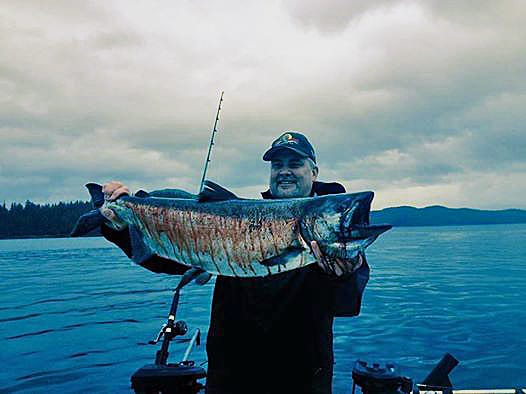Ketchikan fishing charters explain the different life stages of all varieties of salmon inhabiting the waters of Alaska
Although there are 5 distinct species of salmon that inhabit the waters of Alaska, they each share one similarity – they each have the same life cycle that begins and ends in the many freshwater rivers that span the Yukon state.
Understanding the stages of this life cycle and when they occur is critical for charters in Ketchikan and other areas of Alaska since that determines the best times for fishing for a particular species. While it is possible to catch a King salmon out of season for example, going when they are most active provides the best opportunity for hauling in a sizable catch.

We invite you to continue reading for a brief description of the 7 life cycle stages for salmon that call the Pacific-basin home.
1. Fertilized egg stage – Every Alaskan salmon starts out as an egg in a gravel bed in a freshwater river or creek. These eggs will “incubate” for a certain amount of time depending on the type of salmon and the temperature of the water. During this process, the salmon inside the egg develops its eyes, spine and tail. Once this process is complete, the egg will hatch and the salmon begins its life.
2. Alevin stage – Once the egg hatches, the salmon enters the alevin stage. These fish are still quite small and remain in the gravel beds safe from predators. Salmon in the alevin stage have a noticeable orange yolk sac attached to their bodies that provide nutrients. As the nutrients in the yolk sac are depleted toward the end of this stage, the salmon develop their mouths and small oval-shapes on their sides. After this process, the fish start to move away from the gravel beds to look for food.
3. Fry stage – This stage begins once the salmon leaves the gravel beds where they were born. Salmon in the fry stage have noticeable “parr” marks (except Pinks) that conceal the fish from predators. Although fry stage salmon have a lot of energy, they typically stay in slower moving waters and feed on plankton and insect larvae. How long a salmon stays in the fry stage depends on the species – some are only there for a short time while others like the King will stay for up to a year.
4. Smolt stage – Once the “parr” marks start wearing away and the salmon starts moving toward saltwater, it enters the smolt stage. Fish in this stage are growing quite rapidly. They typically stay in the brackish waters at the mouth of a river. Again, how long they stay in this stage and
how big they are varies by species. Once the salmon reaches a certain size, they are ready to migrate into the open ocean and begin their adult life.
5. Adult stage – Salmon are considered “adults” when they complete the migration from freshwater to saltwater. They will feed in the open-ocean for a certain length of time depending on the species. King salmon for example will stay in the ocean for 6 years whereas Pink salmon will stay for about two before heading back to freshwater to spawn.
6. Spawner stage – At a certain point, the salmon will begin migrating back to freshwater where they enter the spawner stage. Salmon in this stage undergo tremendous physical changes, including their color. Sockeye, King and Silver salmon for example will change from a silvery greyish color to maroon or red. The jaws of male salmon will also change to a hook shape, which is known as a “kype.” Pink and Sockeye males will also develop a defined hump on their back.
Interestingly, salmon in the spawner stage will migrate back to almost the same exact spot where they were born. Species like the Chum salmon will migrate up to 2000 miles to spawn! The distance they go depends on the species and the river.
Upon reaching the gravel beds, the females will lay their eggs in the gravel while the males fertilize them with something called “milt.”
This spawning “run” occurs during the summer months and provides the best fishing opportunities. However, determining the exact time this occurs isn’t easy. In most Alaskan rivers, the King salmon arrive first, then the Sockeye, Pinks, Chums and Silver in that order.
7. Post-spawn – If a salmon makes it to the spawning grounds without getting caught or eaten by a predator, they will complete the breeding process as described in number 6. Once this process is over, the adult salmon die off and therefore complete the life cycle.
Understanding this life cycle and when the salmon are in the spawning “run” stage is critical to determining the best time for getting out to the water. If you time it right, it is really easy to load up on a good number of salmon to feast on. Literally thousands of Alaska residents and salmon enthusiasts from around the world come during these times for some of the best fishing.
Ketchikan fishing charters like us here at Oasis Alaska Charters keep a close-eye on this life cycle to determine when the spawning run will happen for a particular salmon species. To find out when the spawning run is expected to occur for a given species and to schedule your trip, contact Oasis Alaska Charters in Ketchikan as soon as you can. The spawning runs are the most popular time for people from around the world to come and visit the Yukon state, so fishing charters will book up fast.
Back to Salmon Fishing in Ketchikan Info
